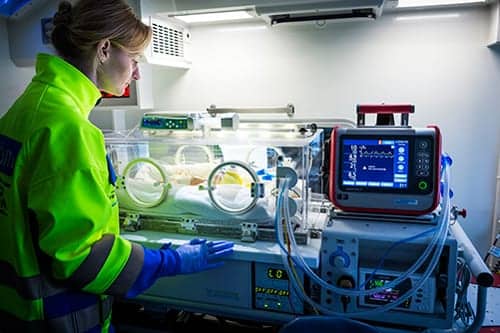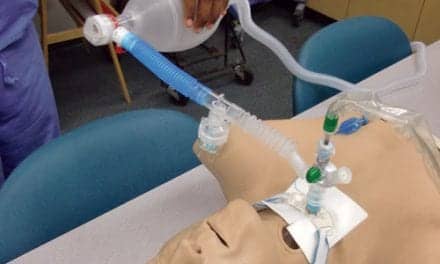Hamilton Medical’s HAMILTON- T1 transport ventilator is now approved in the EU with a neonatal option, according to the company.
The HAMILTON-T1 with neonatal option is a high-end transport ventilator that delivers the same performance during transport as a fully featured NICU ventilator at the bedside. The device supports tidal volumes of just 2 ml, allowing for effective, safe, and lung- protective ventilation for even the smallest preemies.
Its neonatal flow sensor accurately measures pressure, volume, and flow proximal to the patient, which provides the required sensitivity and response time, and prevents dead space ventilation. Therefore, the patient is better synchronized and the work of breathing (WOB) is reduced. The new neonatal expiratory valve can balance even the smallest differences in pressure and offers the neonate the possibility to breathe spontaneously in each phase of a controlled breathing cycle.
In addition to all modern neonatal ventilation modes, the HAMILTON-T1 offers a new generation of nCPAP. In the new nCPAP-PC (pressure control) mode, you only define the desired CPAP target value for your patient and the ventilator automatically and continuously adapts the required flow to the patient’s condition and possible leaks.
Thanks to the demand flow technology, your patient will receive only as much flow as is necessary to obtain the set CPAP target. This reduces WOB, reduces the need for user interventions and ensures optimal leak compensation. You will also require less oxygen for transport and noise caused by the ventilator decreases distinctively.
The device’s built-in high-performance turbine makes it completely independent of compressed air, gas cylinders or compressors. This saves weight and space and even noninvasively ventilated neonates can be transported over long distances. The combination of a built-in and an optional hot-swappable battery provides a battery operation of more than 9 hours. This can be extended indefinitely with additional hot-swappable batteries.
The device is currently available in EU and EFTA member states and other countries that recognize the CE marking. The device is not yet available in the USA.










